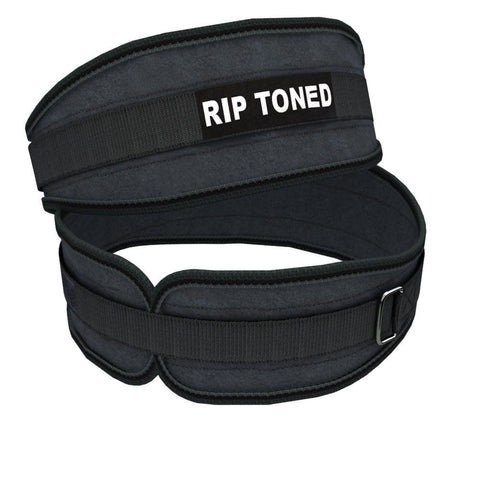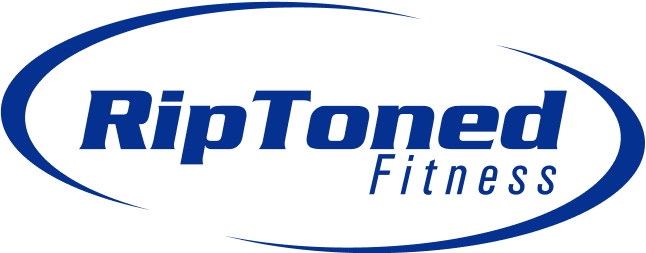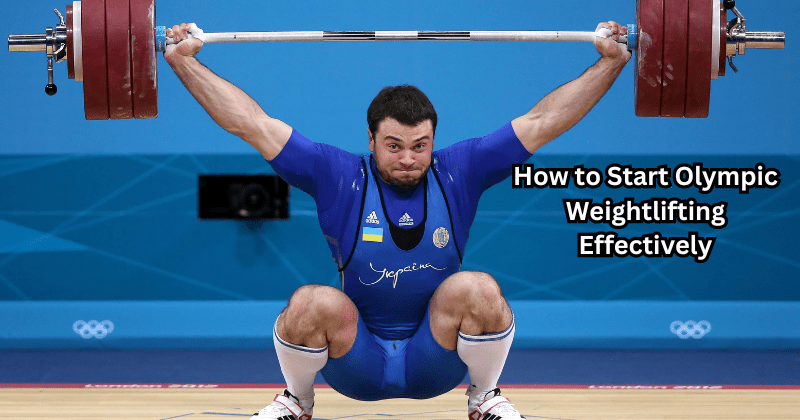Starting Olympic weightlifting involves more than just picking up a barbell; it’s a detailed craft of learning precise lifts and equipping yourself correctly.
In this article, we will discuss how to start Olympic weightlifting by stripping away the complexity, breaking down the crucial snatch and clean & jerk techniques, and guiding you in choosing your weightlifting gear. Plus, discover the best beginner strategies to build a solid foundation in Olympic lifting.
Key Takeaways
- Olympic weightlifting requires mastering fundamental lifts, such as the snatch and clean & jerk, coupled with precision and technique, not just raw power.
- Starting Olympic lifting necessitates appropriate gear, including weightlifting shoes, a suitable barbell, bumper plates, and a quality lifting platform to ensure safety and performance.
- To evolve from a novice to a confident Olympic weightlifter, one must build a solid foundation through core exercises, develop mobility, and embrace the support of coaches and the lifting community.
Unlocking the Basics of Olympic Weightlifting
The heart of Olympic weightlifting, a discipline in the Olympic Games, pulses with two iconic Olympic lifts: the snatch and the clean and jerk. Both lifts are symphonies of strength, demanding more than raw power—they require precision, timing, and harmony of muscles working in unison.
Whether your goal is to compete or improve your overall fitness, understanding these foundational lifts is crucial. We’ll break down these complex movements, setting you on the path to lifting excellence.
Decoding the Snatch
The snatch is an elegant ballet of power consisting of the following steps:
- Begin with your feet shoulder-width apart and grip the barbell beyond your shoulders.
- Squat deeply, with knees splayed and hips lower than your shoulders.
- In one fluid motion, channel the force of your entire body to catapult the bar overhead, keeping it tantalizingly close to you.
Mastery of the snatch grip and lift isn’t just about lifting weights—it’s about orchestrating every muscle to perform in perfect concert.
Mastering the Clean and Jerk
The clean and jerk is a two-act play with a dramatic twist. The plot thickens as you pull the bar from the earth, seamlessly transitioning to the hang position and climaxing with the bar secured at your shoulders. But the story doesn’t end there.
With a powerful drive, you split your legs and punch the bar skyward, completing the lift that tests the limits of your full-body strength. The clean and jerk, also known as the push press, isn’t just a lift; it’s an art form requiring a craftsman’s touch and an athlete’s heart.
Essential Gear for Starting Olympic Lifting
Starting your Olympic weightlifting journey resembles embarking on a voyage. The proper equipment can guide you through turbulent waters and lead you to victory. Your arsenal should include:
- Weightlifting shoes for a rock-solid foundation
- A barbell that becomes an extension of your own body
- Bumper plates that forgive as you learn
- Collars to keep your ship steady
- A lifting platform is the stage on which you’ll perform your feats of strength
Remember to include supportive accessories such as knee sleeves and a belt - they serve to protect and fortify.
The Right Lifting Shoes
In Olympic weightlifting, shoes play a role beyond just footwear. They form the foundation upon which you build towering lifts. With weightlifting shoes laced tight, you’ll feel an unwavering connection to the ground, a necessity when every ounce of force counts. Their design isn’t just for show; it’s about maintaining the upright posture essential for channeling your power where it matters most.
Choose your shoes wisely, for they are the silent allies that will ground you, lift you, and ultimately define the stability of your performance.
Choosing Your Barbell and Plates
Choosing your barbell is like selecting a dance partner - it needs to be a perfect match with a weight that complements your own. For men, a 20kg barbell is standard, while women typically use a 15kg bar. Bumper plates add to the duet, allowing you to drop the bar from on high without a second thought to the safety of your home gym floor.
It’s a partnership built on trust, with the barbell’s spinning sleeves safeguarding your wrists as you embark on this journey of strength and self-discovery.
Establishing a Solid Foundation
Just as a skyscraper requires a deep and strong foundation, your journey in Olympic weightlifting begins with core exercises that brace your spine and transfer energy efficiently. Bodyweight exercises will chisel the raw strength needed for the lifts, while barbell foundation exercises like deadlifts and squats prepare your body for the unique demands ahead.
As you build your base with incremental weight increases, remember that your progress is not just about the kilos lifted but the quality of your technique and the resilience of your foundation.
Developing Mobility for Optimal Lifts
Mobility is the unsung hero of Olympic weightlifting, a quality that allows you to glide through lifts with grace and power. Exercises like PVC pipe pass-throughs and deep goblet squats aren’t just warm-ups; they’re the keys to unlocking your body’s full potential.
By dedicating time to deep squats, half squat exercises, and shoulder stretches, you’re ensuring that no tight muscle holds you back from achieving the perfect squat position or overhead lift. Embrace these mobility drills, for they are the spells that will free every joint and muscle to perform at its highest capacity.
Building Positional Strength
Positional strength is the cornerstone of Olympic weightlifting prowess. When you dive into exercises like clean pulls and snatch balances, you’re not just lifting weights; you’re sculpting the positions that will define your success. These movements are your training ground, teaching your muscles to remember and master the postures that make or break a lift.
Embrace the tension and maintain the integrity of your form—this is where the seeds of your future lifts are sown, in the sweat and steel of your exercise science-driven training sessions.
Your First Olympic Weightlifting Program
For beginners looking to start Olympic lifting, your initial starting Olympic weightlifting program serves as your guide to success. Designed to be your guide for 8-12 weeks, with a frequency of three days per week, this program isn’t about hoisting the heaviest weights but mastering the fundamentals. You’ll build a toolbox of exercises and skills that will serve as your compass, guiding you through the intricacies of the snatch and clean & jerk.
With each session, you’ll turn the pages of this program, writing your story of strength and skill.
Structuring Your Training Sessions
Your training sessions act as a canvas where your Olympic weightlifting journey takes shape. Begin with the brushstrokes of skill- and power-based movements when your muscles are fresh and eager. Follow with the rich colors of strength and accessory exercises, layering on the detail that will bring your lifting portrait to life.
It’s a delicate balance of exertion and recovery, ensuring that each training day leaves you stronger, not strained. Remember, a masterpiece isn’t rushed—it’s built with patience, precision, and the deliberate practice of your craft.
Progression and Adjustments
Progression in weightlifting mirrors climbing a mountain - consistent, measured steps will lead you to the peak. Here are some tips for progressing in weightlifting:
- Incrementally increase your lifting intensity by 2-3% each week.
- Master a weight across several sessions before moving on to a heavier weight.
- Remember, this is not a race; it’s a pilgrimage to the peak of your potential.
Adjust your load, listen to your body, and remember that the path to Olympic lifting greatness is as unique as you are. With each lift, you’ll rise higher, growing from the strength within.
Finding Guidance and Support
Greatness in sports doesn’t occur in isolation. Achieving mastery in Olympic weightlifting involves the support of coaches, camaraderie among fellow lifters, and the shared wisdom of a community. Whether you seek the watchful eye of a coach or the encouragement of a weightlifting club, this journey is enriched by the guidance you’ll find along the way, especially in USA weightlifting.
Embrace the shared knowledge, the constructive feedback, and the motivational push that only a network of dedicated individuals can provide. Together, you’ll lift more than weights—you’ll lift each other.
Seeking Out a Qualified Coach
In the quest for Olympic lifting excellence, a qualified coach is your guide through uncharted territories. They are the ones who will refine your technique, turning rough movements into polished gems. With their expertise, you’ll navigate the intricate landscapes of the snatch and clean & jerk, avoiding the pitfalls that ensnare the self-taught lifter.
A coach’s feedback is a lifeline, pulling you back when you stray and propelling you toward your goals. Seek weightlifting coaches who understand your aspirations and have the knowledge to transform you into the lifter you aim to be.
Leveraging the Weightlifting Community
Joining a weightlifting community offers many benefits, including:
- Finding your tribe—a group that speaks your language of grit and grind
- Discovering a wealth of experience and knowledge
- Receiving encouragement and support from like-minded individuals
- Engaging in friendly competition to fuel your fire
Beyond the gym, virtual communities offer a space to share triumphs and tribulations, learn from seasoned athletes, and find opportunities to grow. Embrace the communal spirit of Olympic lifting, where every member, from novice to advanced, shares the same mission: to lift and to be lifted.
Common Pitfalls for Beginners
Every beginner’s path, including in Olympic weightlifting, is filled with challenges. It’s easy to stumble in the face of complex movements and the allure of heavyweights. Common pitfalls in Olympic weightlifting include:
- Incorrect setup positions
- Overzealous initial pull
- Inefficient lifts
- Potential injuries
It’s important to be aware of these pitfalls and take steps to avoid them in order to progress safely and effectively in Olympic weightlifting.
Keeping the bar too far from your body or engaging your arms too early can derail your progress. Awareness is your armor against these missteps. By staying vigilant and adhering to proper technique, you’ll navigate the beginner stages with confidence and poise.
Overemphasis on Lifting Heavy
The siren song of heavy weights can be tempting, but in the symphony of Olympic weightlifting, technique should lead the melody. An overemphasis on lifting heavy too soon can distort the harmony of your lifts, leading to bad habits and stunted progress.
Remember, the journey to mastery is not a sprint; it’s a marathon that unfolds over years. Patience and persistence in honing your skills will pay dividends in the weight room, setting the stage for a future where heavy lifts are not just attempted but achieved with grace and power.
Neglecting Proper Warm-Up Routines
Skipping a proper warm-up is akin to setting sail without checking the winds—a risky venture that could capsize your lifting session. Warm-up routines are the gentle breeze that prepares your body for the storm of lifting, increasing blood flow, and priming your muscles for action. Neglecting this critical prelude can leave you vulnerable to injuries, disrupting your training and delaying your progress.
Embrace the ritual of warming up, allowing it to become as much a part of your routine as the lifts themselves.
Transitioning from Novice to Confident Lifter
The transformation from a novice to a confident lifter involves a journey marked by effort, persistence, and an unwavering pursuit of progress. Assessing your progress, celebrating your victories, and planning for long-term development are the stepping stones on this path.
As your confidence blooms, your training will evolve to reflect the practices of the seasoned weightlifter. Coaches become not just instructors but partners in your quest, helping you to monitor fatigue, build relationships, and cultivate a positive training environment. With each lift, you’re not just moving weights—you’re elevating your spirit.
Assessing and Celebrating Progress
Progress in Olympic weightlifting is a mosaic of technical finesse, newfound strength, and unwavering consistency. It’s not just about the weights you lift but how you lift them. As an Olympic weightlifter, celebrate the technical improvements that make each lift smoother, the new repetition maximums that mark your growing strength, and the consistency that shows your mastery of the weights.
Acknowledge the strides you’ve made in various lift variations, for each one adds a piece to the complete picture of your development. In the reflection of your triumphs, find the motivation to press on to even greater heights.
Planning for Long-Term Development
Olympic weightlifting isn’t a passing interest; it’s a lifelong engagement with the iron. To thrive in this sport and learn Olympic weightlifting, you must:
- Look beyond the immediate horizon and plan for the years ahead
- Participate in events
- Soak in the wisdom of experienced coaches
- Never cease to educate yourself on the evolving science of strength training.
Set goals that stretch into the future, and periodically refresh your coaching and training techniques to stay at the forefront of the sport. The journey is long, but the rewards of patience and dedication are immeasurable.
Summary
We’ve embarked on a comprehensive journey, from grasping the fundamental lifts to planning for a future in Olympic weightlifting. Along the way, we’ve equipped ourselves with the right gear, laid a solid foundation, and structured our training to optimize progress. We’ve sought guidance and banded together with a community that shares our passion. By avoiding common pitfalls and celebrating every milestone, we’re transitioning from novices to confident lifters poised for success. Embrace these lessons, and let them guide you to heights you once thought unreachable. The barbell awaits, and so does your potential—lift it and ascend.
Frequently Asked Questions
How to start weightlifting at the Olympics?
Start with low or no weight, and some coaches even begin with a weightless yoga stick before progressing to a barbell. It's important to start at a level suitable for your athletic ability and gradually increase the weight as you progress.
What are the two primary lifts in Olympic weightlifting?
The two primary lifts in Olympic weightlifting are the snatch and the clean and jerk. These movements require full-body coordination and form the foundation of the sport. Keep up the hard work!
Do I need special shoes for Olympic weightlifting?
Yes, specialized weightlifting shoes are recommended to provide stability and proper posture for effective force transfer during lifts. This can greatly benefit your performance.
How often should beginners train in Olympic weightlifting?
Beginners should aim to train in Olympic weightlifting 3 days per week to build skills and strength and allow for proper recovery. This frequency provides a great balance for progress and avoiding burnout.
Why is mobility important in Olympic weightlifting?
Improving mobility in Olympic weightlifting is crucial as it helps you perform lifts with proper technique, prevents injuries, and allows for a greater range of motion, leading to efficient and safe lifting.


